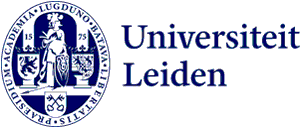Thesis and papers
When writing a thesis or paper you must make good use of the insights you have gained during your lectures and studies so far. You should also refer to relevant literature and carry out your own research on the topic.
One of the most important things you will learn during an academic study programme is how to write an interesting piece of work that meets the criteria of scientific quality, whilst also being accesible to the broader public.
Refer to our Study skills pages for more information on academic writing skills.
Astronomy thesis writing
All Astronomy master's research projects will be concluded with a thesis written in English. A thesis typically contains the following elements in the given order:
- Abstract
- Introduction
- Sections describing the work
- Discussion
- Conclusion
- References
- Appendices (optional)
Tips and tricks
The abstract summarizes the main message of the thesis. It should not be too long with a maximum of 50% of a page at a 11 pt font.
The introduction provides the background science with references, introduces the problem which is addressed by the paper, and can also briefly explain the structure of the paper. For example: In section 2 we define the sample, in sections 3-5 we present the analysis, a discussion is found in section 6 and the conclusions are presented in section 7.
All figures should be clear and have unambiguous captions. In general, figure captions explain the content of the figure, state units presented in the figure and provide the most important scientific conclusion from the figure. The goal is that people can understand the science of the paper by just looking at the figures and their captions. Hence it is generally not enough to just write "Figure 1 shows the size of a planet against its age". It should add "Young planets are larger than old ones".
It is important to have a clear structure and story line to your thesis. First define the figures, then the abstract, and then write the thesis as a story around the figures. The figures should be the figures you show in a talk. If you have many more figures to highlight details, consider to put them in an appendix. (e.g., if you have 30 objects to show, show 2 typical ones in the paper, and the rest in an appendix). Another helpful trick can be to first define a 30-minute talk: make the slides, with science introduction and conclusions etc; make sure the story line is clear; practice a few times; then write up your thesis as if you are giving the talk (but now in a "paper" format - the language is somewhat different but the overall story line can be the same).
Realize that most people don't read papers or theses fully. Play into this. They first look at the title, then look at the authors (be clear on that), then they read the abstract, look at (some) figures and maybe read the conclusion (or part of it).
Plagiarism
The writings and ideas of others form an important part of academic work. The work of others, however, must be clearly identifiable and distinguished from your original writings and ideas. Failure to properly acknowledge the work of others is plagiarism, whether or not you intended to represent the work as your own. All Astronomy master's theses will be checked for plagiarism. Make sure you carefully read the University's regulations on plagiarism.
How to avoid plagiarising the writings of others?
To avoid any possible allegation of plagiarism being made about your thesis it is important to learn how to represent the writings of another person properly. A short section of text that is taken from another’s work and is unchanged must appear within quotation marks with an acknowledgement being given to the original work. A larger section of text that is quoted should also be indented. An acknowledgement should appear either as a footnote or by the addition of the author’s name and the year of the publication in the text, with the full citation being referenced. References should be detailed enough to allow anyone reading the thesis to locate the original work to the exact page/paragraph where it appears. If you do not reference adequately you may intentionally, or unintentionally (inadequate note taking of text referred to is no excuse!), be seen to be 'passing off' another person’s writings as your own, which is a breach of the laws governing copyright, the University regulations and academic practice.
Improve your academic writing skills
Learn about the best ways to write and how you can motivate yourself to write well. Take a loot at our ten tips for good academic writing and learn about opportunities for thesis writing workshops.
Ten tips for good academic writing